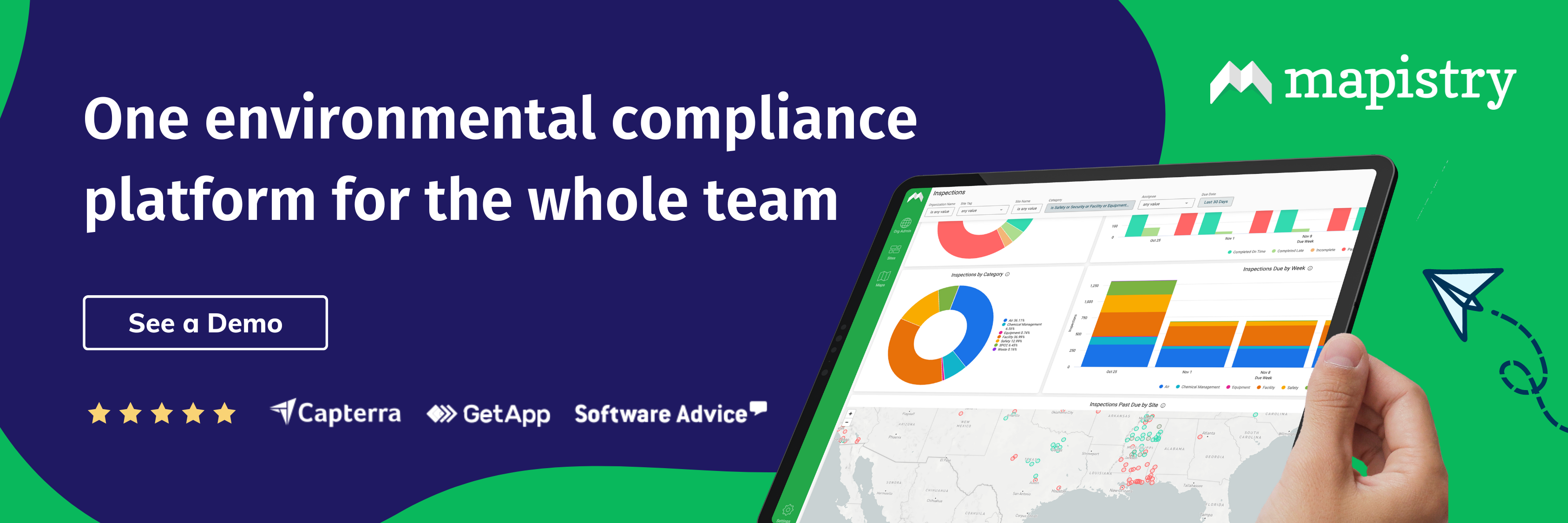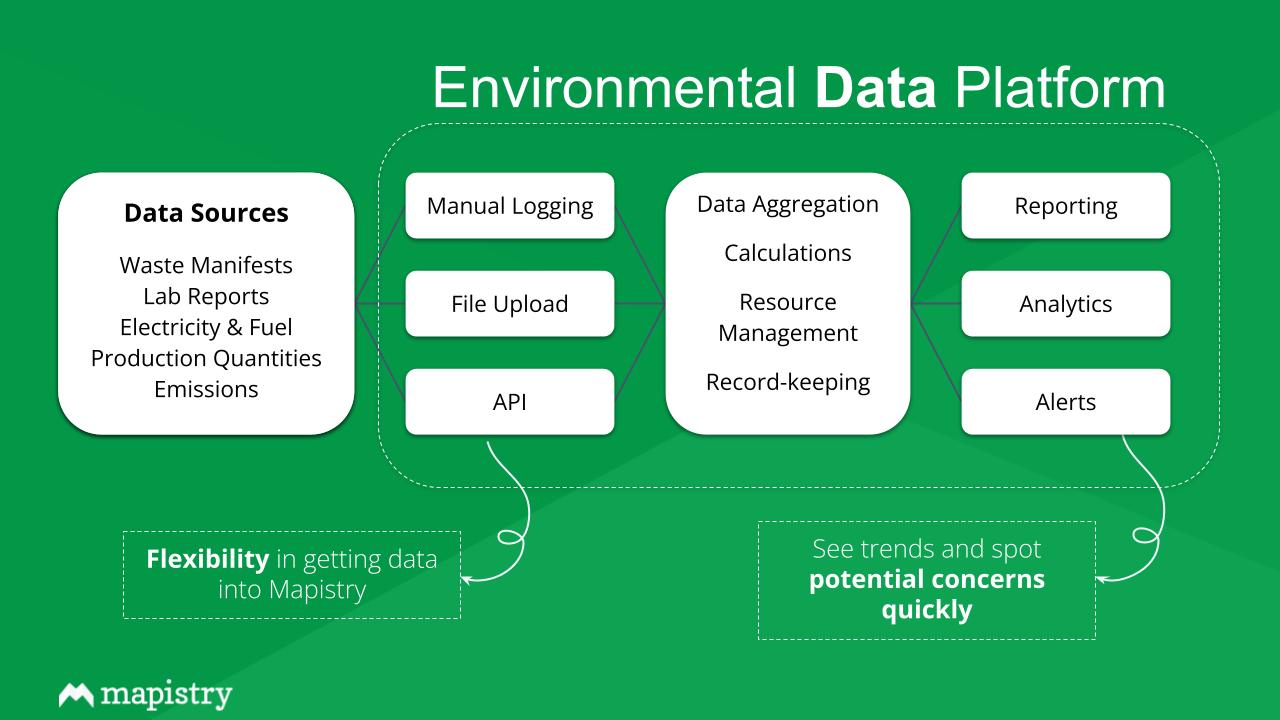Mapistry's newest product release, the Environmental Data Platform, addresses the complexities of air emissions record-keeping and reporting head-on. Mapistry's Environmental Data Platform development has been an exciting journey for the company's talented team. Engineers, product designers, and subject matter experts have collaborated closely, leveraging their diverse skill sets to create a product that aids manufacturing facilities dealing with complex permit conditions.
What is the Environmental Data Platform?
Ariel: Mapistry's Environmental Data Platform is an all-encompassing system that allows EHS professionals to be proactive in managing their quantitative data requirements. It covers various types of data, such as air emissions, water sampling, and waste data. With the Environmental Data Platform, users can easily input their data requirements, and we facilitate the process of fulfilling those requirements. The platform consolidates all the data in one place, providing complete visibility for the entire team. It also offers trend analysis and automated notifications, alerting users when attention is needed.
What impact does Environmental Data Platform have on Mapistry customers?
Ariel: The Environmental Data Platform revolutionizes the way EHS teams handle environmental data. Currently, many professionals struggle to collect data using paper log sheets or Excel spreadsheets. This leads to limited visibility for EHS managers, especially if their team relies on paper-based methods. It becomes challenging to ensure that required data is collected on time and presented in a format suitable for inspection. Additionally, analyzing data to identify trends and proactively improve programs becomes a time-consuming task. Our goal with EDP is to streamline the entire process, making data requirements clear to the entire team, simplifying data collection, and providing trend analysis. By enabling EHS managers to be proactive, they can achieve much more without constantly dealing with urgent issues.
Who gets the biggest advantage from the Environmental Data Platform?
Ariel: The Environmental Data Platform is particularly advantageous for EHS leaders who currently manage their air, water, or waste programs using paper logs or Excel spreadsheets. While these tools offer flexibility, they have limitations when it comes to visibility, data validation, proactive notifications, and trend analysis. EHS data and calculations are complex, making a dedicated system highly beneficial. Furthermore, understaffed EHS teams managing multiple sites face significant challenges as they multiply the number of spreadsheets and paper logs with limited oversight. The Environmental Data Platform helps address these pain points, allowing teams to gain better control and efficiency.
What is the main focus for the current product progression of Mapistry?
Ariel: Currently, our main focus is on expanding the capabilities of the environmental data platform. We have some exciting functionality that will be launching soon, such as building out public API access. This means that your IT team can establish a connection to automatically send production data to your Mapistry air emissions log. Additionally, we are developing direct data entry on Mapistry's mobile app, which works offline, enabling staff to input data even with limited connectivity while onsite. We are also working on more advanced analytics capabilities. The potential for leveraging this data is limitless, and we are thrilled about the opportunities that lie ahead.
What part of the development process has been the most fun?
Ariel: We are fortunate to have a highly talented team comprising engineers, product designers, and subject matter experts at Mapistry. The most enjoyable moments have been when the product team comes together to brainstorm and solve challenges collaboratively. Witnessing the synergy between different disciplines—engineering, product design, and subject matter expertise—has been incredibly rewarding. Through this collective effort, we have been able to create a product that surpass
On-Demand Webinar: Air Emissions Management without Spreadsheets :How to get 200 hours back a year with Mapistry's Environmental Data Platform


